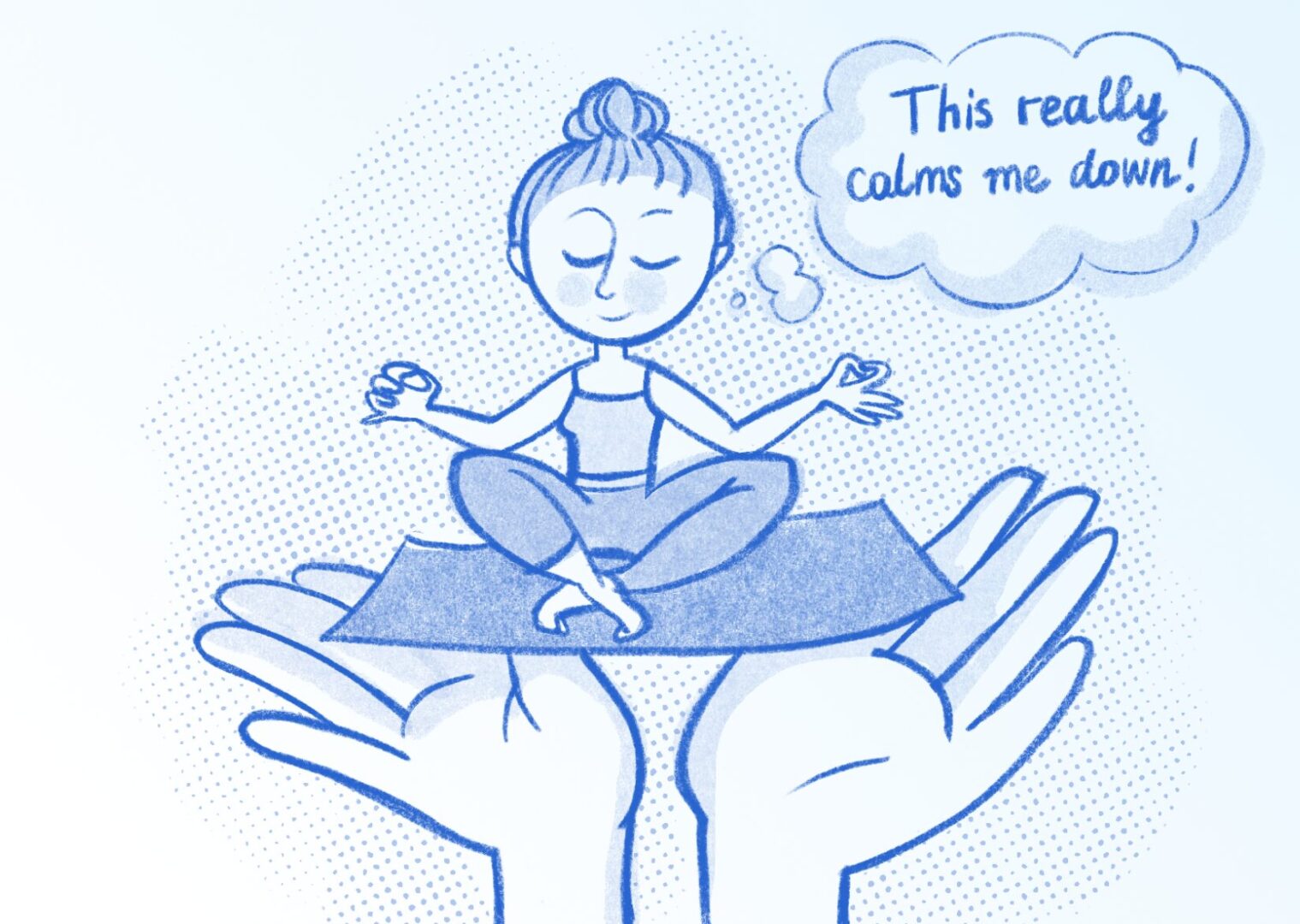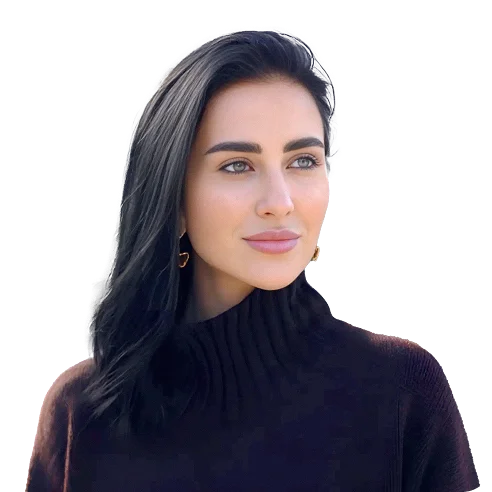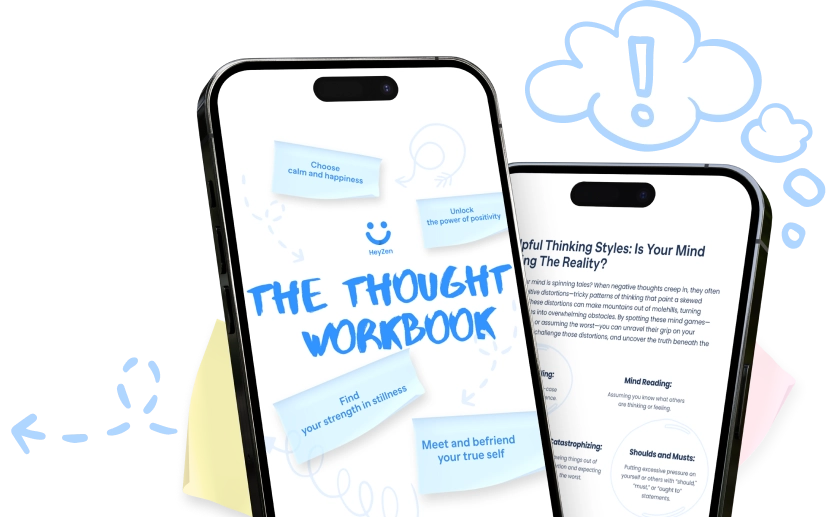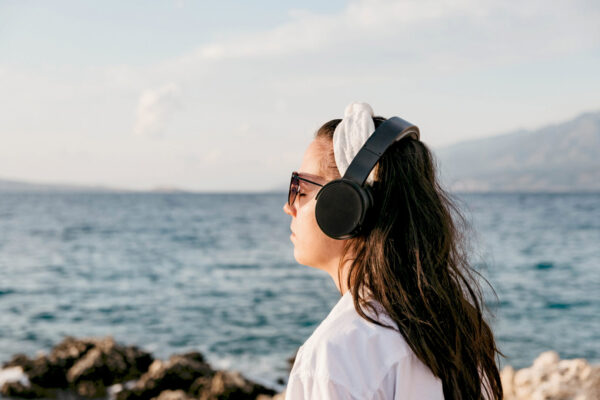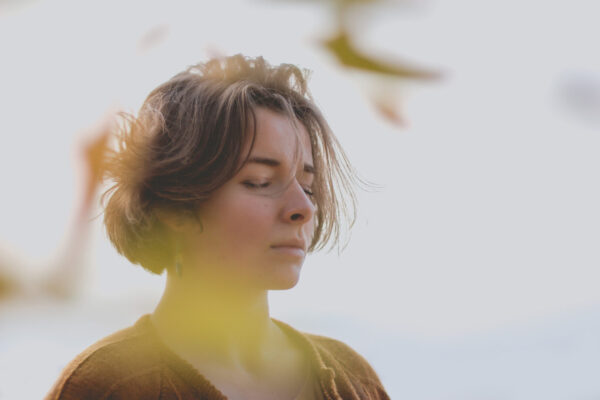10 Best Chair Yoga Apps for All Abilities: Ultimate Guide 2025
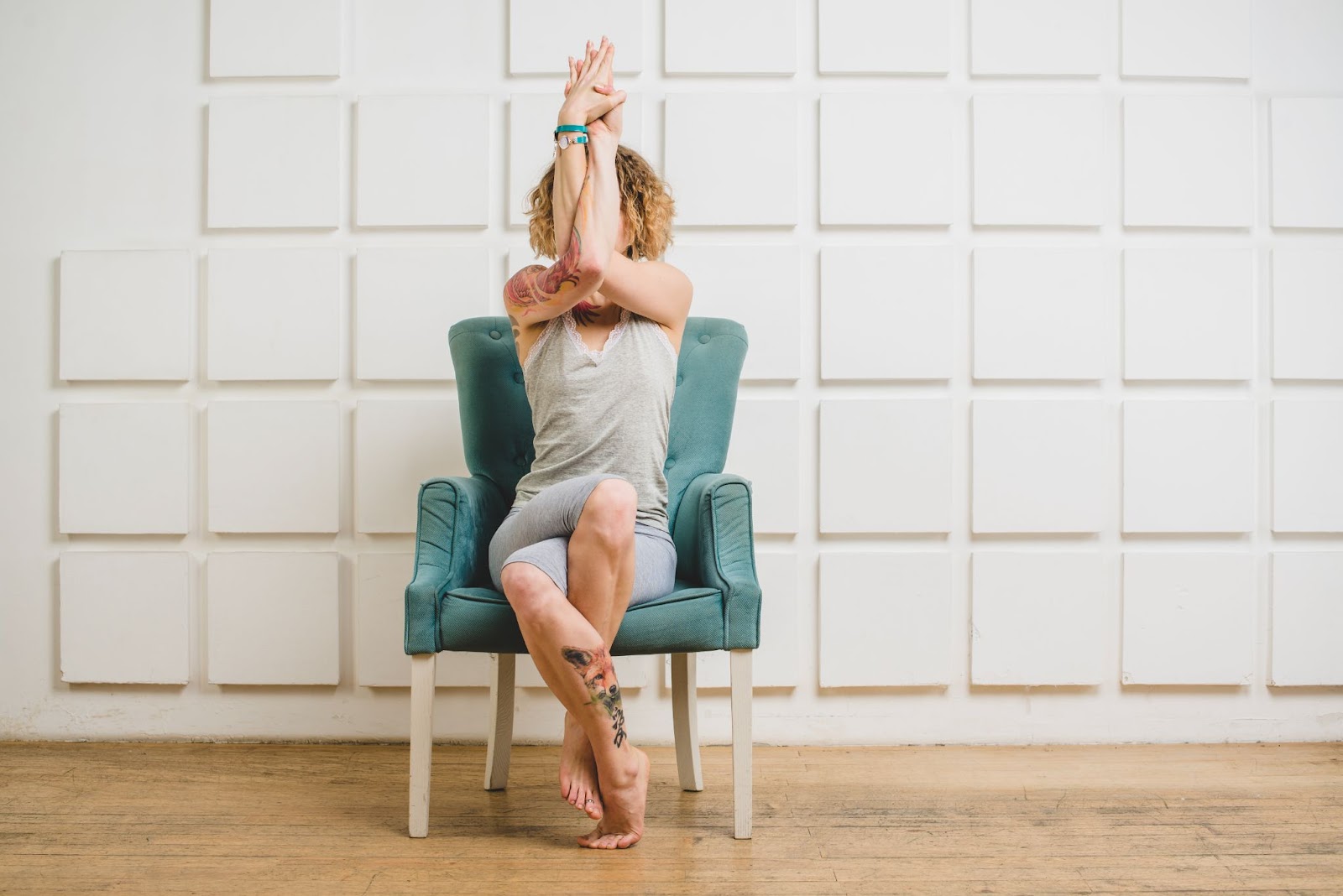
Imagine transforming your daily routine with a yoga practice that doesn’t require getting up from your chair. Chair yoga has emerged as an accessible form of exercise that’s perfect for everyone – from office workers seeking quick breaks to seniors looking for gentle movement options. It’s especially beneficial for those with mobility challenges or people who find traditional yoga poses too demanding.
Research shows that regular chair yoga practice offers impressive health benefits, including improved flexibility, better posture, reduced muscle tension, and decreased stress levels. With the rise of digital wellness solutions, you’ll find specialized apps that bring expert-guided chair yoga sessions right to your fingertips, making it easier than ever to maintain a consistent practice that fits your unique abilities and lifestyle.
What is chair yoga?
Chair yoga adapts traditional yoga poses by incorporating a chair for support, making yoga accessible to practitioners of all abilities. Developed in 1982 by Lakshmi Voelker-Binder, this gentle form of yoga focuses on core principles: breath awareness, mindful movement, and present-moment consciousness.
Here’s what makes chair yoga unique:
- Uses a stable chair as primary support for balance during poses.
- Modifies traditional postures to reduce joint pressure.
- Combines seated and standing positions with chair assistance.
- Creates accessible variations for different mobility levels.
- Maintains yoga’s essential breathing and mindfulness elements.
The practice serves multiple populations:
- Office workers seeking midday movement breaks.
- Seniors looking for low-impact exercise options.
- People with limited mobility or disabilities.
- Individuals recovering from injury.
- Beginners exploring yoga foundations.
| Key Components | Benefits |
| Breathwork | Reduces stress |
| Gentle stretching | Improves flexibility |
| Balance poses | Enhances stability |
| Core engagement | Strengthens posture |
| Mindfulness practice | Increases focus |
Chair yoga requires minimal equipment – just a sturdy chair and enough space to move comfortably. Each pose adapts to the practitioner’s abilities rather than forcing the body into challenging positions, making it an effective option for maintaining physical activity regardless of fitness level or mobility constraints.
Benefits for different age groups and abilities
Older adults (65+ years)
Chair yoga provides specific advantages for seniors:
- Reduces fall risk through improved balance exercises.
- Enhances joint mobility with low-impact movements.
- Strengthens core muscles for better posture.
- Promotes healthy aging with gentle stretching.
- Manages arthritis symptoms through controlled movements.
Working professionals
The practice offers targeted benefits for desk workers:
- Relieves muscle tension from prolonged sitting.
- Improves workplace posture alignment.
- Reduces physical stress during work hours.
- Enhances focus through breathing techniques.
- Prevents repetitive strain injuries.
People with limited mobility
For individuals with mobility challenges, chair yoga enables:
- Safe exercise without standing requirements.
- Modified poses that accommodate physical limitations.
- Progressive strength building at a comfortable pace.
- Increased range of motion through gentle stretching.
- Pain management for chronic conditions.
Fitness levels breakdown
| Fitness Level | Recommended Session Length | Weekly Frequency | Expected Benefits |
| Beginner | 10-15 minutes | 2-3 times | Flexibility, Basic Strength |
| Intermediate | 20-30 minutes | 3-4 times | Balance, Core Stability |
| Advanced | 30-45 minutes | 4-5 times | Enhanced Strength, Endurance |
Medical conditions
- Arthritis patients benefit from joint-friendly movements.
- Multiple sclerosis patients gain improved body awareness.
- Diabetes management through regular gentle exercise.
- Heart disease patients engage in safe cardiovascular activity.
- Dementia patients experience cognitive stimulation.
Why use a chair yoga app?
Just as the best somatic yoga apps, tools for chair yoga provide guided instruction for practicing yoga using a chair as a prop or support. These digital tools make yoga accessible to practitioners of all abilities while offering structured guidance for safe practice.
Convenience and accessibility
Chair yoga apps eliminate common barriers to regular yoga practice by offering:
- Practice sessions available 24/7 from any location with a chair.
- No travel time or scheduling constraints for studio classes.
- Options for quick sessions during work breaks or longer practices at home.
- Easy access for individuals with mobility limitations or disabilities.
- Digital instruction suitable for seniors aging in place.
Customization options
The best yoga apps adapt to individual needs through:
- Multiple difficulty levels from beginner to advanced.
- Adjustable session lengths from 5 to 60 minutes.
- Specialized routines for specific conditions or goals.
- Progress tracking features to monitor improvements.
- Options to focus on flexibility, strength, or relaxation.
Cost-effectiveness
- One-time purchase or affordable subscription models.
- No additional equipment costs beyond a sturdy chair.
- Elimination of ongoing studio membership fees.
- Access to multiple instructors’ teaching styles.
- Regular content updates without extra charges.
TOP 10 best chair yoga apps
| App Name | Key Features | Target Users |
| Reverse.Health | Personalized plans, nutrition guidance | Women of all abilities |
| Adaptive Yoga LIVE | Pain-specific routines, live classes | Limited mobility individuals |
| Evolve21 | 21-day program, pose timers | Progressive learners |
| Pocket Yoga | Offline access, no subscription | Independent practitioners |
| Down Dog | Unique sequences, varied routines | Regular practitioners |
1. Reverse.Health
It focuses on women’s holistic wellness, combining personalized workout plans with comprehensive nutrition guidance. The app features adaptive difficulty levels to match individual fitness goals.
Features:
- Personalized chair yoga sequences based on mobility assessment.
- HD video demonstrations with verbal cues.
- Progress tracking with adaptive difficulty levels.
- Integration with health tracking devices.
Pros:
- Customizable workout duration (5-45 minutes).
- Clear audio instructions.
- Offline access to downloaded sessions.
Cons:
- Limited free content.
- Requires initial fitness assessment.
- Monthly subscription is required for full access.
Pricing:
| Plan | Cost |
| Monthly | $14.99 |
| Annual | $99.99 |
| Free Trial | 7 days |
2. Adaptive Yoga LIVE
The app specializes in mobility-specific modifications with healthcare provider insights. The platform offers both live streaming sessions and recorded classes targeting specific pain points.
Features:
- Live-streamed chair yoga classes.
- Interactive instructor feedback.
- Community support groups.
- Modified poses for various abilities.
Pros:
- Real-time instructor interaction.
- Diverse class schedule.
- Social connection opportunities.
Cons:
- Time zone restrictions.
- Requires a consistent internet connection.
Pricing:
- Monthly: $19.99
- Quarterly: $49.99
- Annual: $159.99
3. Evolve21
The app structures chair yoga practice into a 21-day program format. Each session includes professionally filmed instruction videos with integrated pose timers and breathing guides.
Features:
- 21-day chair yoga programs.
- Daily meditation sessions.
- Breathing exercise guides.
- Progress milestone tracking.
Pros:
- Structured learning path.
- Comprehensive wellness approach.
- Beginner-friendly interface.
Cons:
- Fixed program duration.
- Limited pose variations.
Pricing:
- One-time purchase: $39.99
- Premium features: $4.99/month
4. Pocket Yoga
The tool delivers offline accessibility with detailed pose instructions. The app requires no subscription and enables users to customize session lengths.
Features:
- Offline access to routines.
- Voice-guided instructions.
- 3D pose demonstrations.
- Custom session creation.
Pros:
- No internet required.
- Detailed pose library.
- Customizable practice length.
Cons:
- Basic graphics.
- Limited chair-specific content.
Pricing:
- One-time purchase: $2.99
- No subscription required
5. Down Dog
Down Dog generates unique chair yoga sequences for each practice session. The app prevents routine repetition by creating fresh combinations of poses.
Features:
- Dynamic sequence generation.
- Multiple language options.
- Adjustable pace settings.
- Music selection variety.
Pros:
- Fresh sequences each time.
- High-quality audio.
- Regular updates.
Cons:
- Chair yoga is in the premium subscription only.
- Limited free features.
Pricing:
- Monthly: $9.99
- Annual: $59.99
6. YogaGo
The app incorporates beginner-friendly chair routines within its free content library. The platform includes gentle practices suitable for low-impact exercise requirements.
Features:
- Short chair yoga breaks.
- Office-specific routines.
- Posture correction tips.
- Break reminder system.
Pros:
- Quick session options.
- Workplace integration.
- Clear instructions.
Cons:
- Basic progress tracking.
- Limited community features.
Pricing:
- Free version available
- Premium: $7.99/month
7. Chair Yoga for Seniors
The tool delivers guided sessions specifically designed for older adults. The app maintains a selection of free content accessible to beginners.
Features:
- HD video demonstrations of 30+ seated chair yoga routines.
- Voice-guided relaxation sessions.
- Customizable practice duration (5-45 minutes).
- Progress tracking with achievement badges.
- Offline access to downloaded sessions.
Pros:
- Large-print text and high-contrast display.
- Simple navigation system.
- Detailed safety instructions.
- Modification options for each pose.
Cons:
- Limited free content.
- No live instructor feedback.
- Requires stable internet for streaming.
Pricing:
| Plan | Cost | Features |
| Basic | Free | 10 basic poses, 3 routines |
| Premium | $9.99/month | Full library, offline access |
| Annual | $59.99/year | All features + personalized plans |
8. Senior Fitness
Senior Fitness targets individuals with sedentary lifestyles through quick chair-based exercises. The app integrates seamlessly into office environments.
Features:
- 25+ chair-based exercise routines.
- Heart rate monitoring integration.
- Social community support.
- Daily workout reminders.
- Print-friendly exercise guides.
Pros:
- Medical professional oversight.
- Emergency contact feature.
- Multi-language support.
- Regular content updates.
Cons:
- Higher monthly cost.
- Some features require wearable devices.
- Limited community interaction.
Pricing:
| Plan | Cost | Features |
| Trial | Free 7 days | Full access |
| Monthly | $14.99 | All features |
| Yearly | $89.99 | All features + health coaching |
9. Chair Exercises
The tool combines seated and standing routines for workplace wellness. The program accommodates both desk-based and general fitness objectives.
Features:
- 40+ equipment-free workouts.
- Breathing exercise library.
- Custom routine builder.
- Exercise timer.
- Progress photos.
Pros:
- Beginner-friendly interface.
- Quick-start options.
- Video + audio instruction.
- Downloadable content.
Cons:
- Basic graphics.
- No live classes.
- Limited social features.
Pricing:
| Plan | Cost | Features |
| Basic | Free | 15 exercises, 5 routines |
| Pro | $7.99/month | Full access |
| Lifetime | $79.99 | One-time payment |
10. Chair One Fitness
The app transforms standard chair exercises into engaging dance routines. The platform eliminates equipment requirements while maintaining exercise effectiveness.
Features:
- Live streaming classes.
- 50+ recorded sessions.
- Virtual instructor feedback.
- Goal-setting tools.
- Nutrition guidance.
Pros:
- Professional instructors.
- Real-time corrections.
- Active community.
- Regular new content.
- Requires stable internet.
- Fixed class schedule.
- Higher price point.
Pricing:
| Plan | Cost | Features |
| Basic | $19.99/month | Live classes only |
| Plus | $29.99/month | Live + recorded content |
| Premium | $149.99/year | All features + 1:1 coaching |
Specialized chair yoga apps
Chair yoga apps offer tailored experiences for specific needs through specialized programs, expert-led sessions, and adaptive modifications. These apps provide targeted content for distinct user groups, ensuring optimal benefits based on individual requirements.
Best for seniors: Chair Yoga for Seniors
Apps like Chair Yoga for Seniors emphasize balance improvement, joint mobility, and fall prevention exercises. These apps feature larger text displays, clear audio instructions, and slower-paced sequences with extended hold times. Key features include:
- Voice-guided sessions with detailed safety cues.
- Programs designed for arthritis management.
- Balance-building routines with chair support.
- Memory-enhancing movement sequences.
- Social components for community engagement.
Best for office workers: HeyZen
Office-centered chair yoga apps like HeyZen focus on desk-friendly exercises, posture correction, and stress relief techniques. These apps integrate:
- 5-15 minute break-time sequences.
- Neck and shoulder tension relief poses from various yoga styles.
- Wrist and hand stretches for typing strain.
- Lower back strengthening exercises.
- Eye strain reduction techniques.
Best for people with chronic pain: Down Dog
Pain management chair yoga app Down Dog incorporates gentle movements and breathing techniques for symptom relief. Features include:
- Joint-friendly movement sequences.
- Pain-specific modification options.
- Progressive difficulty levels.
- Guided relaxation techniques.
- Symptom tracking capabilities.
Features to look
A high-quality app should incorporate essential features that enhance the user experience for practitioners of all abilities. These features ensure safe practice while maximizing the benefits of chair yoga sessions.
Variety of routines
Chair yoga apps provide diverse routines targeting different goals such as flexibility, strength, or relaxation. The routines range from 7-30 minutes in length with modifications for seated poses, standing poses using chair support, and breathing exercises. Effective apps include specialized sequences for specific conditions like arthritis, back pain, or limited mobility.
Clear instructions and demonstrations
High-resolution video demonstrations show proper alignment and transitions between poses from multiple angles. Audio instructions guide users through each movement with specific cues for positioning, breathing patterns, and pose modifications. Visual aids highlight key alignment points and common adjustments to maintain proper form.
Customization options
Flexible settings allow users to adjust session length, difficulty level, and pose duration. Filter options sort routines by physical ability, time available, and targeted benefits like stress relief or joint mobility. Personal preferences for music, instruction style, and practice pacing create an individualized experience.
Progress tracking
Built-in tracking features monitor completed sessions, total practice time, and achievement milestones. Digital journals record energy levels, mobility improvements, and pain reduction patterns. Statistical dashboards display weekly and monthly activity summaries with graphs showing consistency and advancement.
Accessibility features
Voice-guided navigation assists users with visual impairments in accessing app functions. High-contrast display modes and adjustable text sizes enhance readability. Closed captions accompany video content while audio descriptions detail visual demonstrations. Multiple language options accommodate diverse user populations.
How to get the most out of a chair yoga app
Chair yoga apps transform traditional yogic practices into accessible digital experiences. These platforms provide guided instruction optimized for seated practice with specific features for different mobility levels.
Setting up your space
A dedicated practice space enhances the experience. Position your device at eye level, 3-4 feet away, for a clear view of demonstrations. Create a calm environment with these elements:
- Lighting: Natural light or soft artificial illumination reduces eye strain.
- Floor Surface: Non-slip surface or a mat for stability.
- Room Temperature: 68-72°F (20-22°C) maintains comfort during practice.
- Space Requirements: 4×4 feet minimum area around the chair.
- Device Setup: Stable platform or stand for your mobile device.
Choosing the right chair
The right chair serves as the foundation for safe practice. Select a chair with these specifications:
- Height: 18-20 inches from floor to seat.
- Structure: Solid base with no wheels or swivel mechanisms.
- Material: Firm cushioning with breathable fabric.
- Weight Capacity: Minimum 250-pound weight rating.
- Design: Straight back without arms for unrestricted movement.
Creating a consistent practice schedule
Establish a structured routine for optimal results:
- Morning Sessions: 10-15 minutes before work.
- Lunch Break: 5-minute stretching sequences.
- Evening Practice: 15-20 minutes for relaxation.
- Weekly Goals: 3-4 sessions minimum.
- Progress Tracking: Log completed sessions in the app.
Combining with other forms of exercise
- Walking: 15-minute walks between sessions.
- Strength Training: Basic resistance exercises 2-3 times weekly.
- Balance Work: Standing poses using chair support.
- Breathing Exercises: 5-minute pranayama breaks.
- Stretching: Desk stretches during work hours.
Safety considerations for chair yoga
Chair yoga practice requires attention to safety protocols to prevent injury and maximize benefits. Following specific guidelines ensures a secure and effective practice environment.
Consulting with healthcare professionals
Medical clearance forms the foundation of safe yogic practices. Discuss existing health conditions like high blood pressure, heart disease, arthritis, or recent surgeries with healthcare providers before starting. Share relevant medical information with app instructors through profile settings to receive appropriate modifications and guidance.
Proper form and technique
Proper alignment creates a safe foundation for yogic practices. Here are essential form guidelines:
- Position the chair on a non-slip surface.
- Sit with feet flat on the floor, hip-width apart.
- Maintain space between feet and chair legs for stability.
- Keep the spine straight and shoulders relaxed.
- Align knees over ankles when standing.
- Use a sturdy, armless chair that supports your weight.
Listening to your body
- Notice sharp pain versus normal stretch sensation.
- Adjust poses when experiencing dizziness or shortness of breath.
- Respect physical limitations without forcing movements.
- Monitor heart rate during more active sequences.
- Take breaks when muscles feel fatigued.
- Maintain steady breathing throughout practice.
Warning signs to stop practice
- Chest pain or pressure.
- Severe joint discomfort.
- Extreme dizziness.
- Irregular heartbeat.
- Difficulty breathing.
Comparing chair yoga apps to traditional yoga apps
Chair yoga apps and traditional yoga apps offer distinct features that cater to different user needs and abilities. Understanding these differences helps in selecting the most suitable app for your practice.
Similarities and differences
Chair yoga apps share core elements with traditional yoga apps while maintaining unique characteristics:
Common features:
- Guided sessions with audio instructions.
- Progress tracking capabilities.
- Focus on breath awareness.
- Emphasis on mindful movement.
- Options for different experience levels.
Key differences:
- Chair yoga apps include specific chair modifications.
- Traditional apps require more open floor space.
- Chair yoga apps feature seated alignment cues.
- Traditional apps focus on mat-based sequences.
- Chair yoga apps offer more joint-friendly options.
When to choose chair yoga over traditional yoga
Select this type of accessible yoga in the following situations:
Physical considerations:
- Mobility issues in legs or feet.
- Recovery from injury or surgery.
- Balance concerns.
- Joint pain or arthritis.
- Pregnancy modifications are needed.
Environmental factors:
- Limited floor space.
- Office or workplace setting.
- Travel situations.
- No access to yoga props.
- Need for immediate practice options.
- Beginning yoga practice.
- Returning after exercise break.
- Managing chronic conditions.
- Building strength gradually.
- Transitioning from physical therapy.
The future of chair yoga apps
Chair yoga apps continue to evolve with technological advancements that enhance accessibility and user experience. These innovations transform how practitioners engage with guided sessions through digital platforms.
Emerging technologies
Virtual Reality (VR) integration creates immersive experiences with 3D instructors demonstrating proper form and alignment. Also, AI-powered motion tracking systems can analyze posture and movement patterns, providing real-time feedback on form corrections. Smart chair sensors monitor pressure points and weight distribution, ensuring optimal positioning during poses.
| Technology | Application in Chair Yoga Apps |
| VR/AR | 3D pose visualization and immersive environments |
| AI Analytics | Real-time form correction and personalized adjustments |
| Motion Tracking | Posture analysis and movement pattern recognition |
| Smart Sensors | Pressure point monitoring and alignment feedback |
Predictions for future developments
Advanced personalization algorithms create adaptive programs based on individual progress data and mobility patterns. Cross-platform integration enables seamless synchronization between wearable devices, mobile apps, and smart home systems. Voice-controlled interfaces enhance accessibility through hands-free navigation and pose guidance.
| Future Feature | Expected Impact |
| Adaptive Programming | Customized routines based on user data |
| IoT Integration | Connected fitness ecosystem |
| Voice Control | Enhanced accessibility for limited mobility users |
| Social Features | Virtual group sessions and community support |
Complementary practices to chair yoga
Chair yoga integrates seamlessly with other wellness practices to create a comprehensive fitness routine. These complementary activities enhance the benefits of chair yoga while providing variety in your exercise regimen.
Meditation apps
Meditation apps offer guided sessions focusing on stress reduction, mindfulness meditation, body scanning techniques, and breathing exercises. Popular meditation apps include features like progress tracking, customizable session lengths from 5-30 minutes, and specialized programs for sleep, anxiety, and focus. These apps complement chair yoga by deepening the mind-body connection.
Breathing exercise apps
Breathing exercise apps provide structured pranayama practices that enhance oxygen flow and reduce stress levels. These apps feature guided breathwork sessions, visual breathing timers, and customizable inhale-exhale ratios. Key features include:
- Timed breathing exercises from 1-20 minutes.
- Visual breath animations.
- Audio guidance for proper technique.
- Progress tracking for breathing patterns.
- Programs for energy, relaxation, and focus.
Traditional yoga classes
In-person or virtual traditional yoga classes provide opportunities to:
- Learn proper alignment principles.
- Receive hands-on adjustments.
- Experience group energy.
- Access expert instruction.
- Build foundational yoga knowledge.
Fitness classes
- Low-impact cardio for heart health.
- Strength training with light weights.
- Tai chi for balance and coordination.
- Pilates for core stability.
- Water exercises for joint mobility.
| Activity Type | Session Length | Weekly Frequency |
| Meditation | 5-30 minutes | 3-7 times |
| Breathing | 1-20 minutes | Daily |
| Yoga | 30-90 minutes | 2-3 times |
| Fitness | 20-45 minutes | 2-4 times |
Conclusion
Chair yoga apps offer a transformative way to maintain your fitness journey regardless of physical limitations or busy schedules. They’ve revolutionized how you can practice yoga by making it more accessible, affordable, and adaptable to your unique needs.
Whether you’re a senior looking to improve balance, an office worker seeking stress relief, or someone managing mobility challenges, there’s an app designed just for you. With continuous technological advancements and an increasing focus on inclusive fitness, these digital tools will only get better at supporting your wellness goals.
Take the first step toward better health by choosing an app that aligns with your abilities and start your chair yoga practice today. Your body and mind will thank you for it.
FAQ
What exactly is chair yoga?
Chair yoga is a gentle form of yoga that modifies traditional poses to be performed while seated or using a chair for support. Developed in 1982 by Lakshmi Voelker-Binder, it makes yoga accessible to people of all abilities, including seniors, office workers, and those with limited mobility.
How often should I practice chair yoga for the best results?
For optimal results, practice chair yoga 2-3 times per week. Beginners can start with 10-15 minute sessions and gradually increase to 30 minutes. Consistency is more important than duration, so establish a regular routine that fits your schedule.
What are the main benefits of chair yoga?
Chair yoga offers numerous benefits, including improved flexibility, better posture, reduced muscle tension, and lower stress levels. It also helps enhance balance, strengthen core muscles, increase joint mobility, and promote mindfulness. For seniors, it reduces fall risk and helps manage arthritis symptoms.
Do I need special equipment for chair yoga?
No, you only need a sturdy chair with a flat seat and enough space to move around safely. Avoid chairs with wheels or unstable legs. Optional equipment might include a yoga mat for better grip and comfortable clothing that allows free movement.
Is chair yoga safe for people with health conditions?
Generally, chair yoga is safe for most people, including those with chronic conditions. However, it’s important to consult your healthcare provider before starting any new exercise program. The gentle, modified nature of chair yoga makes it particularly suitable for those with limited mobility or chronic conditions.
What makes chair yoga apps different from regular yoga apps?
Chair yoga apps specifically focus on seated or chair-supported poses, offering modifications for limited mobility. They typically include detailed instructions for chair positioning, safety guidelines, and routines designed for specific conditions like arthritis or office-related strain.
Can chair yoga help with stress relief?
Yes, chair yoga effectively reduces stress through focused breathing exercises, gentle movements, and mindfulness practices. The combination of physical activity and meditation techniques helps lower cortisol levels and promotes relaxation, making it particularly beneficial for workplace stress management.
How long does it take to see results from chair yoga?
Most practitioners report feeling more relaxed and experiencing improved flexibility within 2-4 weeks of regular practice. Physical benefits like better posture and increased strength typically become noticeable after 6-8 weeks of consistent practice, though individual results may vary.

